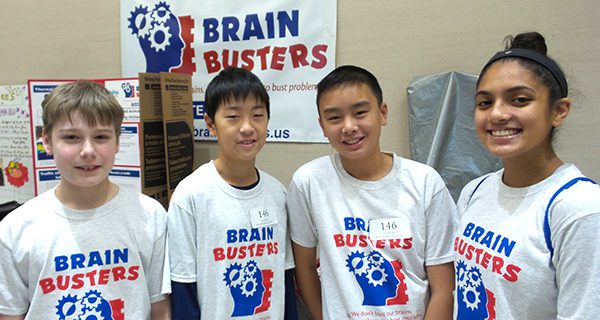[ccfic caption-text format="plaintext"]
The Sherborn-based Brain Busters team recently took the top score in the 2016 FLL Robotics competition in Worcester. The Brain Busters team is comprised of Ryan Bendremer (12), Joseph Jia (11), Zachary Szeto (13), and Riya Bahadur (12).
During the Regional competition, the team also won the Last Robot Standing Award, competing against dozens of teams from around the state. The Brain Busters also received the Strategy and Innovation Award in recognition of their solid engineering practices and a well-developed strategy to design and build an innovative, high performing robot.
The FLL program also has a project component in which teams from around the world create innovative solutions to a real world problem related to a specific theme. This year’s theme was “Animal Allies,” and teams were asked to make improvements or solve problems with the ways people interact with animals.
The Brain Busters looked at the serious problem of animal vehicle collisions. There are 1.5 million of these collisions in the US alone, causing thousands of injuries and over 4 billion dollars in damage. The team developed three methods that work together to warn drivers that there are animals ahead on the road. The first uses smart signs that detect animals on the side of the road and light up with a warning. The second uses a thermal camera and smart phones to help drivers see animals. Finally, the signs and analytics software on the cameras feed information to traffic and mapping apps that warn users that there could be animals on the road.
Team member Riya Bahadur said: “While we see animals on the road all the time here in Sherborn, we were surprised to learn how big a problem this is all over the country.”
“In addition to improving the vision of drivers,” Ryan Bendremer added, “our solution uses automated systems to look for animals from both the vehicle and from sensors on the side of the road.”
Zachary Szteo went on to say: “All of these can connect back to the mapping apps drivers use every day. With just a little extra warning, the number of animal vehicle collisions could drop massively.”
Together, the team members have spent the past several months building and programming robots, as well as working on their innovative project idea.
This year, 255,000 students from ages 9-16 from over 88 countries are participating in the Animal Allies robotics challenge.


























